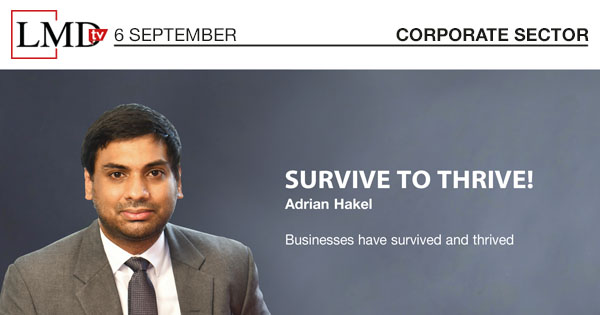According to Rajendra Theagarajah – the Managing Director and CEO of Cargills Bank – ensuring the safety of employees while continuing to operate as an essential service is a task that the banking sector was able to accomplish during the curfew.
He explained that the slowdown in cross border trade, exports, inward remittances and tourism impacted the incomes of individuals and businesses of all sizes, leading to concerns regarding the liquidity of the financial services system.
“With this crisis and the measures taken by the local regulator in terms of moratoriums, the banking sector has been deprived of cash that would have been recycled into the system,” he stated, noting that “this is an issue all banks would have faced in terms of managing their liquidity.”
Moreover, there have been concerns about the quality of the sector’s portfolios and as such, Theagarajah believes the banks will be monitoring them to avoid shocks.
In his view, the Central Bank of Sri Lanka’s move to reduce interest rates is positive and intended to stimulate domestic growth: “One needs to have a hand in the real economy rather than trading. Against this backdrop, the cost of capital is important for all activities – be it manufacturing, innovation and so on.”
To this end, he supports single digit lending rates while acknowledging that “all stakeholders and depositors will not be satisfied but sacrifices have to be made for us to emerge from a situation such as this.”
Commenting on the Central Bank’s Saubagya Renaissance Facility of Rs. 50 billion at the time, he stated that this amount would not be sufficient for its intended purpose.
He elaborated: “With the banking sector possessing a loan book in excess of Rs. 10 trillion, 50 billion rupees would amount to about 0.5 percent of the overall ecosystem of loans. And as SMEs account for a substantial share of businesses, the demand for this capital will far outstrip the supply.”
Theagarajah may now be more content, following the recent increase in this stimulus to 150 billion rupees.
Additionally, he observed that there’s the question of how the Central Bank would prioritise smaller businesses – ideally micro and SMEs – and ensure that the pool of funds isn’t disbursed to larger companies.
He also mentioned that requesting collateral as part of the initiative would not be particularly practical for businesses that are seeking short-term working capital during a crisis such as this: “What would be more important is banks assessing the requests of borrowers to ascertain if they are genuine and validating the valuation of two month requests.”
As for priorities that the banking sector should adopt during this challenging period, Theagarajah highlighted the importance of ensuring the safety of working people: “Regardless of how much we discuss technology, the banking sector is centred on relationships so the foremost concern is preserving intellectual capital by ensuring that everything possible is done – in terms of working from home and so on.”
Continuing, he noted that the second concern is managing, monitoring and conserving liquidity, followed by ensuring that portfolio quality does not spike.
And finally, he pointed to the need for banks to reduce spending: “In this environment, personal and institutional belt tightening is important. Banks are owned by shareholders and if they’re willing to empathise and offer support in a situation such as this, there needs to be some kind of reciprocity.”
As for the ‘new normal’ in the banking sector, he highlighted the shift in payment platform patterns arising out of necessity but stressed that this would not necessarily indicate the death of the bricks and mortar model in the local context.
He asserted: “This is an opportunity for digital or mobile enabled financial services to play an incremental role over what we have witnessed in the past, and prompt banking CEOs and directors to objectively consider digital banking as a business model.”






